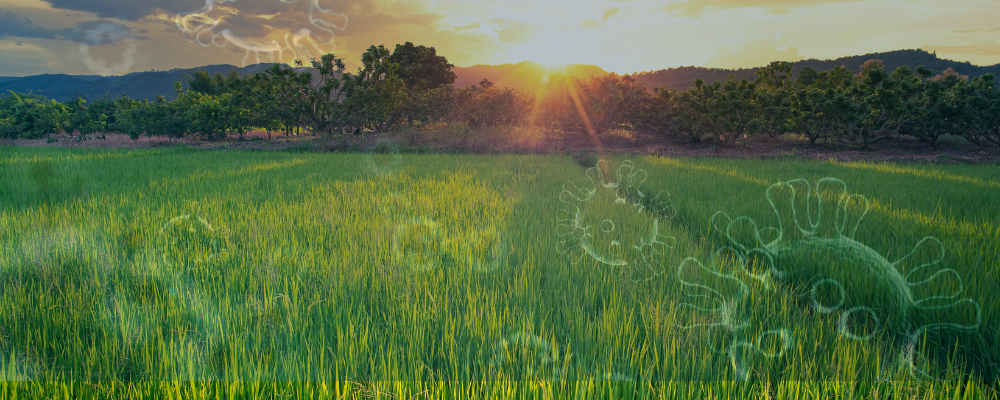African Swine Fever (ASF) is a highly contagious, and usually fatal, viral disease that affects pigs and wild boar. Whilst ASF has been around for decades, an occurrence of the virus at a pig farm in China last August has led to an unprecedented outbreak, which has now spread to every province in mainland China. The virus spreads easily from direct contact as well as from ticks and contaminated surfaces. The number of small farms in the country with low levels of biosecurity has allowed the disease to spread quickly. China produces and consumes around half the world’s pork, causing a huge impact on the global food chain and related industries.
Unfortunately, there is no cure or preventative vaccination for ASF with culling infected pigs being the only option to try to control the outbreak. China’s pig herd loss is expected to reach 50% by the end of the year, and with such vast losses Rabobank has reported that the rest of the world’s producers cannot make up the difference. Unfortunately, ASF is no longer confined to China having spread to areas including Poland, South Africa, Vietnam, North Korea and Mongolia. Although these countries produce and consume less pork compared to China, the impact is still substantial. There is also widespread concern that farmers and governments are under-reporting the number of infected animals to minimise the impact on trade, but this is increasing the risk of infected animals and meat spreading the disease further.
The impact on the global food chain
The biggest impact of ASF is undoubtably on pork production and prices. Chinese pork production is expected to fall by 25% over the course of this year, which will have huge implications due to the amount of pork produced and eaten in China. This has already led to an increase in the price of pork by 40% in China in the last year.
Whilst ASF has created a bad situation for farmers and producers in China, farmers across the world have an opportunity to export their pork due to the limited supply. These pork producers can take advantage of the higher pork prices, the increase in export demand and lower feed prices.
The reduction in pork production, and the subsequent increase in price, means an increase in demand for other meat, particularly poultry. An economic analysis in Europe showed that 60% of meat consumers value chicken and pork equally, meaning globally an increase in poultry production could help offset the reduced pork supply. Poultry production is expected to increase by 10% this year. Poultry also has a short production cycle allowing producers to scale up quickly to meet demand. Those who would usually invest in pork are therefore likely to – and would be wise to – invest in poultry as a safer investment.
Whilst ASF has become a major concern for those operating in the global meat market, it is also impacting on related industries, such as animal nutrition and health.
How does ASF impact the animal feed industry?
ASF has taken its toll on the animal feed market as the decline in pork production in China and other impacted countries has meant less demand for pig feed production. According to Rabobank, hog feed consumption is expected to drop by 30% this year. There is likely to be less demand for grains and crops, such as corn, as well as whey powder for piglet feed. Soybean meal usage could potentially only experience a modest decline due to a growing poultry sector. The positive news is that the hog feed industry is expecting to see a slight recovery by 2020, much sooner than the pig population will be able to recover.
In order to respond to the risks of operating in the hog feed market, feed manufacturers are working to diversify their product mix by investing in poultry and aqua feed. This is aligned with the farming industry expanding their poultry production as an alternative protein source and to help future-proof their businesses against the risk of ASF. Companies are also reassessing the markets they are operating in and determining which countries could offer them opportunities. Many larger, global companies operating in this space are likely to already be diversified in various animal feeds and in different countries, but smaller players who may have focused purely in China on hog feed are having to look at how they adapt their strategy to survive this breakout. All these changes will have an impact on the people working in the animal feed industry. Country managers operating purely in China could face being made redundant, whilst sales reps may need to diversify their skill sets to sell different types of feed.
Pig farmers’ requirements from the animal feed industry are also changing due to the risk of their pigs having to be culled. There is no additive-rich feed to prevent or cure ASF, and they are unlikely to want to spend huge amounts of money on the best quality feed if it is likely their pigs may not survive. Instead, farmers are looking for the cheapest feed that satisfies the nutritional requirements of their animals, impacting those businesses that operate at the higher end of the animal feed market.
Companies operating in this space are also having to address concerns that ASF could be spread through infected animal feed. Feed producers are having to consider where they source ingredients and where they produce hog feed to minimise risk. This has been exacerbated by the fact many American pork producers – a country yet to suffer from the ASF outbreak – source feed from China for their pigs. This has led to advice from government organisations, such as the Canadian Food Inspection Agency, for producers and feed manufacturers to know the origin of all ingredients and to ensure all ingredients have been prepared and processed using proper biosecurity measures.
The long-term impact
The disease is likely to have an impact on pig production for years. Whilst many countries are working towards a vaccination, this could take 2-5 years to go through testing and be released as a safe vaccine. The only cure at the moment is to quarantine and cull pigs and increase biosecurity standards. Even when the outbreak is controlled, the industry is years away from being able to fully recover due to breeding stock being affected by the virus.
Many farmers, producers and feed manufacturers may continue to operate with a more diverse portfolio even after pig production has recovered in order to diversify the risk of their businesses as well as continuing to invest in employees with a more diverse knowledge of different feed additives.
If you operate in the animal feed market, I’d be interested to hear how ASF is impacting your business and how you are adapting your strategy to diversify the risk for your company – please contact me at jennifer.coughlin@csgtalent.com
References
The Economist, Aporkalypse Now
The Poultry Site, Why African Swine Fever Might Create a Boom in Poultry Production
Forbes, How the African Swine Fever Crisis Could Disrupt Global Food Companies
Rabobank, Impacts of African Swine Fever on China's Feed Industry and Soy Demand
Canadian Food Inspection Agency, Importers: Understanding Feed Controls to Prevent African Swine Fever
EuroNews, Price of Pork Meat Rose 40% in China Due to African Swine
WATTAgNet, China Pig Losses 'Critical' Disruption to Intensify





